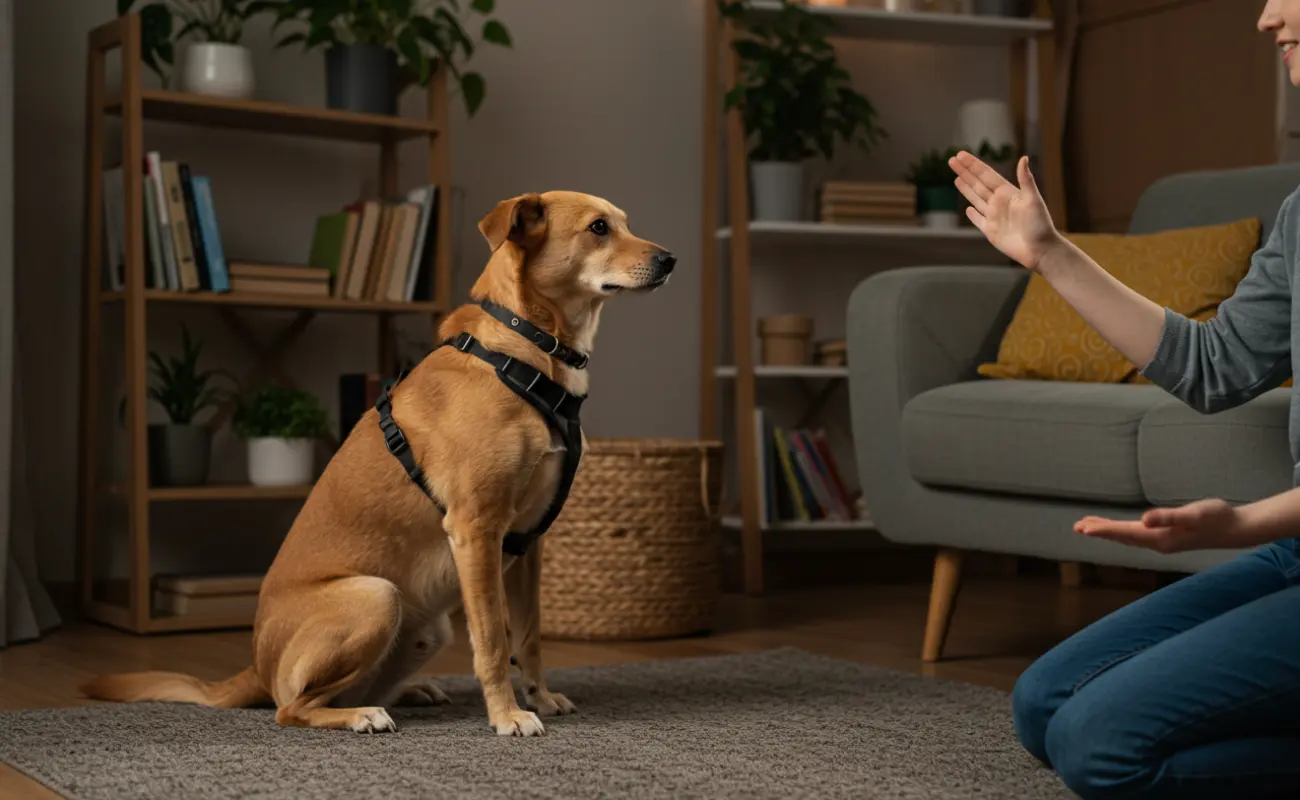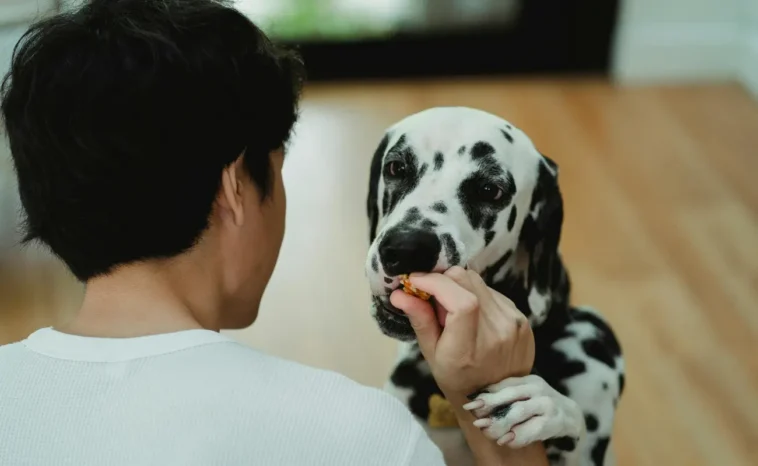Are you ready for a happier home with your beloved dog? Welcome to our guide on Best Dog Training Tips at Home. Training your pet shouldn’t be a hassle—it can be fun, enriching, and a fantastic bonding experience. In this article, we’ll explore the Best Dog Training Tips at Home, give you a roadmap to effective dog training, and show you exactly how to teach your furry companion the basics and beyond.
From understanding the psychology of dogs to troubleshooting common training challenges, our mission is to provide you with everything you need to succeed in dog training. We’ll discuss effective methods, address frequently asked questions, and point you toward solutions whenever you feel stuck. You can also find more helpful resources about pet care—be sure to check out our post, Best Pet Products in 2025, for insight into the latest innovations that might support your training journey.
By the end of this article, you’ll be armed with practical knowledge, actionable tips, and real-life examples to master Dog Training at Home. Get ready to set the stage for a well-behaved, happy, and healthy dog!
Best Dog Training Tips at Home
Overview
Training a dog at home is a multifaceted endeavor. It encompasses understanding your pet’s unique personality, applying tried-and-tested techniques, and being consistent in reinforcing good behavior. Dog training is not just about teaching a dog to sit or stay; it’s a holistic approach that ensures your dog grasps the do’s and don’ts in various scenarios—indoors, outdoors, and when interacting with strangers or other animals.
The Importance of Home Training
When we talk about Dog Training at Home, we’re referring to a familiar environment where your pet feels most comfortable. This setting can help your dog concentrate better, making the training sessions more productive. Home-based training also strengthens the bond between you and your pet because you’re both learning together in a low-stress, familiar space.
Creating a Positive Environment
-
Consistency: Dogs thrive on routine. Set regular training times and be consistent in your commands, gestures, and rewards.
-
Calm Atmosphere: Keep the environment calm and free from distractions, especially when teaching new commands.
-
Short Sessions: Dogs have short attention spans, so aim for multiple, brief sessions (5–10 minutes each) throughout the day rather than one long session.
By mastering the fundamentals of dog training, you’ll see improvements not just in your dog’s behavior but also in their confidence. A well-trained dog is less likely to exhibit destructive or anxious behaviors. Plus, a strong training foundation sets the stage for advanced tricks or specialized tasks, such as therapy or agility work.
Positive Reinforcement vs. Traditional Methods
One of the most common questions about Dog Training Tips at Home is which method yields the best results. Two of the most discussed approaches are positive reinforcement and traditional, correction-based training.
Positive Reinforcement Explained
Positive reinforcement involves rewarding the dog for desired behavior, encouraging them to repeat that behavior in the future. Rewards often include treats, praise, or playtime. This approach generally fosters a trusting, cooperative relationship because the dog associates training with pleasurable outcomes.
Key Elements of Positive Reinforcement
-
Timing: Reward the dog immediately after the desired behavior.
-
Consistency: Use the same cue words and hand signals.
-
Reward Quality: High-value treats or heartfelt praise can amplify the effect.
Traditional Methods: Corrections and Discipline
In more traditional training, corrections (such as a stern “No” or a light leash tug) are used to signal disapproval of an undesired behavior. While these methods can be effective, they require careful use to avoid instilling fear or confusion. Many modern trainers prefer focusing on what the dog is doing right, rather than punishing mistakes.
Which is Best?
Most experts lean toward positive reinforcement because of its proven track record in creating happy, confident dogs. Traditional corrections can still be part of a balanced training regimen, but should be used sparingly and humanely. Always keep your dog’s temperament in mind—some dogs may become anxious or fearful with excessive corrections.

Common Questions About Best Dog Training Tips at Home
When people embark on dog training, a variety of questions tend to pop up. Below are a few that many pet owners wonder about early in their training journey.
1. How Long Will It Take for My Dog to Learn Basic Commands?
The time required varies by breed, age, and individual personality. Puppies typically learn faster if training starts early, while adult dogs may need extra patience. On average, a dog can learn basic commands (sit, stay, come) within two to four weeks of consistent daily sessions.
2. Can I Train Multiple Dogs at the Same Time?
Yes, but it can be more challenging. Ideally, you should train each dog separately to ensure they receive individual attention, especially in the initial phases of learning. Once they understand the commands well individually, you can slowly start training them together.
3. Should I Use Treats for Every Command?
It’s okay to start with treats for every correct behavior, then phase out the treats once the dog consistently performs the command. Over-reliance on treats can create an expectation, so gradually move to random rewards or praise to keep them motivated.
4. My Dog Only Listens at Home—How Do I Train Them Outdoors?
Dogs often exhibit situational learning, meaning they might not generalize commands learned in one environment to another. Practice the same commands in different settings, gradually increasing distractions. Patience and repetition are key.
5. What If My Dog Shows Aggression When I Try to Train Them?
Aggression can stem from fear, pain, or past negative experiences. In such cases, consult a certified behaviorist or veterinarian. They can identify underlying issues and tailor a behavior modification plan.
Tips for Effective Dog Training at Home
Whether you’re working with a brand-new puppy or an older rescue dog, these guidelines can streamline the training process and foster a harmonious home environment.
1. Focus on One Command at a Time
When you try to teach multiple commands simultaneously, your dog may become overwhelmed. Master “sit” before moving on to “stay,” and so forth. This sequential approach lays a strong foundation and reduces confusion.
2. Use Clear Verbal Cues and Hand Signals
Dogs do best when the cues are straightforward and consistent. If you use the word “sit,” don’t switch it to “down” or “sit down.” The same principle applies to hand signals; keep them simple and consistent.
3. Incorporate Short, Frequent Sessions
Short training sessions spaced throughout the day often yield the best results. For instance, practice for five minutes before meals, then another five minutes after mealtime. You’ll retain your dog’s enthusiasm without exhausting them.
4. Provide Breaks and Avoid Frustration
Keep an eye on your dog’s body language. If you notice signs of stress, such as yawning, whining, or trying to walk away, it’s time for a break. You want dog training to be a positive experience, so avoid pushing them too hard.
5. Reward Progress in Different Ways
While treats are highly effective, not all dogs are food-motivated. Some appreciate a favorite toy, belly rubs, or simple verbal praise. Switch up the rewards to keep it interesting and cater to your dog’s preferences.
Challenges and Solutions Related to Dog Training
No matter how prepared you are, hurdles are bound to surface when implementing Best Dog Training Tips at Home. Recognizing common challenges can help you navigate them with confidence.
1. Inconsistent Reinforcement
It’s easy to get busy and forget to reward a good behavior promptly or to inadvertently reward bad behavior (like comforting a barking dog at the wrong moment). The fix? Set reminders on your phone for training sessions and stay conscious of your actions.
2. Dealing with Stubborn Breeds
Certain breeds, such as Bulldogs or Basset Hounds, can appear stubborn during training. Patience is crucial here. Rely on positive reinforcement and experiment with different rewards. Sometimes, a special high-value treat can tip the scales.
3. Household Distractions
From children running around to the sound of the doorbell, household distractions can derail training sessions. Consider using a designated “quiet space” for training. This could be a spare room or a corner of your living area with minimal foot traffic.
4. Training Plateaus
Dogs, much like humans, may hit plateaus where progress seems to stall. Instead of getting discouraged, switch up the routine. If you’ve been focusing heavily on obedience, try teaching a fun trick. Changing the pace can re-engage your dog’s attention.
5. Behavioral Setbacks
Sometimes, a newly learned skill unravels during stressful events (like moving houses or adding a new pet to the family). Revisit the basics—consistency and patience can help the dog regain lost ground.
Benefits of Proper Dog Training at Home
A well-trained dog isn’t just about manners and obedience; it’s about ensuring the well-being of your dog and fostering a positive relationship.
1. Improved Communication
Training creates a language that you and your dog both understand. When your dog knows specific cues and responds reliably, day-to-day tasks like walking, feeding, or welcoming guests become more manageable.
2. Enhanced Safety
A dog that obeys commands like “stay” and “come” is less likely to run into dangerous situations. Whether it’s crossing a busy street or resisting the urge to chase a squirrel, effective dog training can literally be a lifesaver.
3. Better Socialization
Training can be an excellent segue into socializing your dog with other animals and people. When your dog feels confident and understands basic commands, introducing them to new environments becomes less stressful for both of you.
4. Reduced Problem Behaviors
Many common behavioral issues—like incessant barking, digging, or chewing—are minimized when your dog has mental stimulation and clear guidance. Your consistent training sets boundaries that keep destructive behaviors at bay.
5. Strengthened Emotional Bond
Training sessions can be a time of fun and companionship. As you and your dog work toward a common goal, mutual trust and love deepen. The sense of achievement you both experience can be highly rewarding.
Expert Opinions or Research on Dog Training
Many veterinary professionals, animal behaviorists, and research institutions provide insights into Dog Training at Home. Here’s a look at some expert perspectives:
Dr. Emily Zhang, Veterinary Behaviorist
Dr. Zhang emphasizes the importance of positive reinforcement. In her studies, she discovered that dogs trained with reward-based methods exhibited higher levels of motivation and lower stress markers compared to those trained with correction-based methods.
The American Kennel Club (AKC)
The AKC champions a balanced approach but firmly states that punishment should never be harsh or harmful. Their website features numerous articles demonstrating how frequent, short training sessions can help all kinds of dogs learn quickly, from puppies to seniors.
Research from University of Lincoln, UK
A study conducted at the University of Lincoln revealed that dogs trained with consistent, positive cues formed stronger emotional bonds with their owners. This study also indicated that dogs become more cooperative in new or potentially stressful situations when they have a firm foundation of trust built through kindness and consistency.
Professional Dog Trainers’ Consensus
Over 70% of professional dog trainers surveyed by the Association of Professional Dog Trainers (APDT) reported that purely positive methods lead to dogs that are more engaged, enthusiastic learners. Trainers also noted fewer incidences of canine aggression or fear with reinforcement-based systems.
FAQ
1. How often should I train my dog each day?
Most experts recommend 2–3 short sessions a day, each lasting between 5–10 minutes, depending on the dog’s attention span. Too many sessions can lead to burnout, while too few might slow progress.
2. Do I need special equipment to train my dog at home?
Basic equipment like a leash, collar or harness, and a few treats are usually sufficient. Clickers are popular for precise timing of rewards, but they’re optional. You can also use toys or verbal praise if your dog isn’t food-motivated.
3. Can older dogs learn new tricks?
Absolutely! While puppies are more impressionable, adult and senior dogs can learn effectively. They may take a bit longer, but with patience and positive reinforcement, older dogs can master new commands, too.
4. When should I seek professional help?
If your dog exhibits extreme fear, aggression, or other concerning behaviors that don’t improve with basic training, consult a veterinarian or a certified dog behaviorist. They can rule out underlying medical issues and provide a customized plan.
5. How do I avoid overfeeding my dog with training treats?
One way is to use small, pea-sized treats. You can also allot a portion of your dog’s daily kibble ration as training rewards. This way, you won’t exceed their daily caloric intake.
Conclusion & Call-to-Action
Training your dog doesn’t have to be stressful or complicated. By focusing on positive reinforcement, consistency, and clear communication, you can transform your pet into a well-mannered companion who’s a joy to be around. As you put these Best Dog Training Tips at Home into practice, remember to tailor each technique to your dog’s individual needs—no two dogs are exactly alike!
We hope you found these Dog Training at Home strategies helpful. Now it’s time to take action! Start with one command, introduce consistency in your schedule, and watch as your dog blossoms into a confident, well-behaved member of your family. If you have any questions or want to share your success stories, drop a comment or send us a message. And don’t forget to explore our blog for more pet care insights, including our article on Best Pet Products in 2025 to help support your training journey. Good luck, and happy training!






GIPHY App Key not set. Please check settings
One Comment